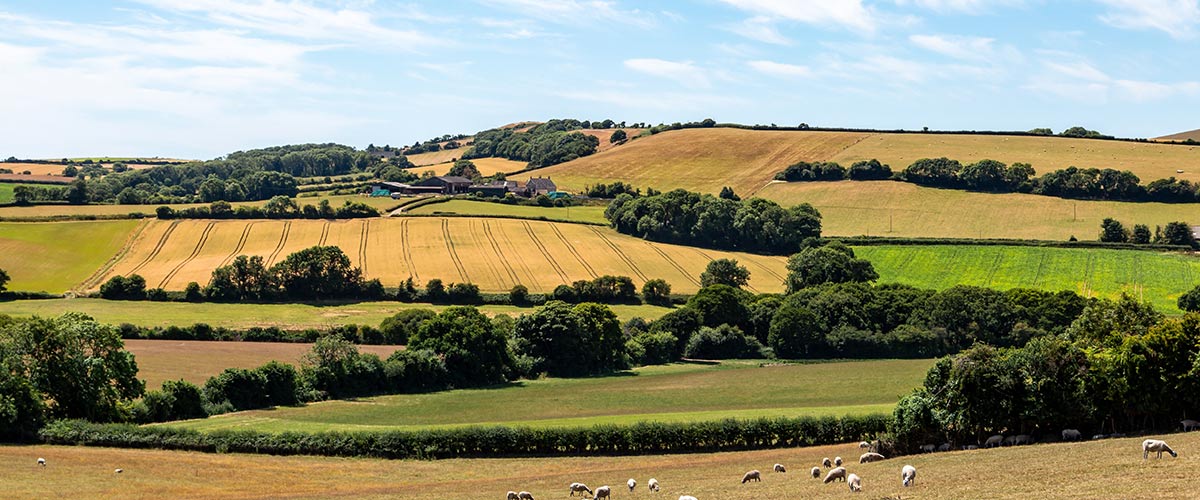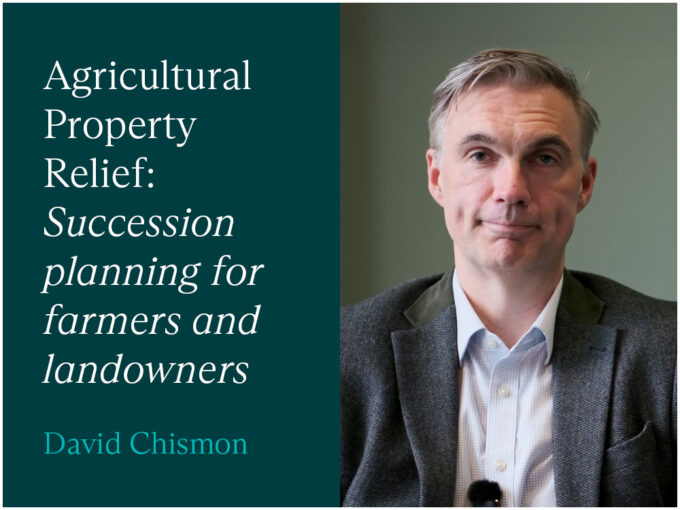The agricultural sector is facing challenges like never before, the impact of climate change is becoming more pronounced, coupled with recent changes to the UK tax regime. Consequently, careful and detailed budgets have come to the forefront of discussions with our agricultural clients.
Impacts on the agricultural budget
Harvest volatility
In June, the performance of this year’s harvest was widely anticipated, with concerns over both quality and yield following an unseasonably dry and hot Spring. Indeed, the impact of changes in climate resulted in one of the earliest harvests in the past 20 years. Initial results were concerning, with wheat crop yields being reported as 11% below the five-year average, however more recent reporting shows a bounce back with yields now only 1% below.
This swing in performance in only two months, is indicative of the volatility of the sector’s performance and how critical environmental factors are on the financial viability of the agricultural business.
A harvest with low yields can have a devastating impact on agricultural businesses, faced with increased direct costs and tax costs, reform of the grant sector and global trade deal impacts, the average UK farmer must consider how to meet these challenges if harvest profitability is not forthcoming.
Changes in the UK tax regime
There has been a major overhaul in the UK inheritance tax (IHT) regime for agricultural landowners. From April 2026, there will no longer be unlimited 100% relief on agricultural land. Instead, relief will be capped, with the first £1 million of land being eligible for 100% relief and any land in excess of £1 million value receiving only 50% relief, resulting in an IHT rate of 20% for land over £1 million.
This is a significant change for farmers across the country, with many planning to work the land until death and then pass onto the younger generation with little IHT due. This will no longer be possible and future generations will be faced with IHT liabilities, with little liquidity in the assets held to enable payment.
Whilst there is the option to spread the cost of the IHT liability over 10 annual instalments (interest free), one bad harvest can seriously impact the ability to meet the payment of instalment dates and whilst the instalments themselves are interest-free, late payment of IHT liabilities incur interest and penalties.
Whilst IHT changes have dominated the headlines, there are other tax changes which will also impact the modern-day farmer and will need to be considered when compiling budgets:
- National Insurance Contributions (NICs) and minimum wage increases – from April 2025, minimum wage rates increased to £12.21/hour and employer’s NICs rate also increased to 15% from 13.8%. Both impacting the wages bill for the average UK agricultural business. There was however one concession, in that the amount an employer can claim back on NICs paid (Employer’s Allowance), being uplifted from £5,000 to £10,000 meaning smaller farms may have seen a decrease in their wage bill.
- Carbon Border Adjustment Mechanism – From 1 January 2027, farmers could see an increase in the cost of imported fertiliser as a result of the introduction of this mechanism, impacting budgets and profitability.
- Double cab pickups – From April 2025, these are now classified as cars rather than vans. This will impact the tax cost of the benefit in kind for these vehicles going forward, although transitional rules were in place.
UK-US trade deal
The UK-US trade deal is under negotiation, with the impact on UK farmers yet to be seen. It’s anticipated that the deal will make operating in parts of the agricultural sector more challenging, particularly in the following areas addressed in the draft deal.
- Bioethanol- The US will now be able to export 1.4 billion litres of duty-free ethanol, this may have a significant impact on arable farmers, with provision of domestic wheat for UK production of bioethanol likely to decrease.
- Beef – The US and UK are both able to export a tariff-free quote of 13,000 tonnes of beef, there are concerns this could lead to a drop in quality in the UK and drive down prices achievable by beef farmers.
- Chicken – the trade deal excludes chicken imports, which will continue to boost the poultry sector.
Grant funding
Following Brexit and the end of Basic Payment Scheme grants, which are being drastically reduced in 2025-26, the agricultural sector has turned towards newly available grants, in the form of Sustainable Farming Incentive (SFI) amongst others.
In March 2025, DEFRA controversially closed the scheme to new applicants, removing a much needed lifeline of income for thousands of farmers.
This uncertainty around future income from grants, was another blow to the farming community and impacts on the financial viability of those who have relied historically on grant funding.
Worked example
An individual with farmland valued at £4 million (approximately 400 acres), all eligible for APR relief, will crystalise a £535,000 IHT bill on death post-April 2026. This can be paid over ten annual instalments of £53,500 a year.
Using an example of 3.2 tonnes per acre of wheat harvested on the above land, fluctuation in wheat prices from £190 per tonne to ten-year lows of £120 per tonne, would result in a reduction of income of around £89,000, which could easily impact the business’s ability to pay its IHT instalment in the year. This example, whilst simplistic, demonstrates how susceptible the arable agricultural sector is to external factors and the fragility of its financial stability.
Next steps
It’s evident that the financial landscape is challenging for the agricultural sector. There are various draws on income not previously experienced, and costs continue to creep up. Robust budgeting and scenario planning can help to ensure that business owners have a strong understanding of their financial position and options, which will aid in any strategic planning.
It’s increasingly difficult to make reliable profits from traditional farming, particularly in the arable sector, therefore having realistic budgets, flexed for worst case scenarios will be essential for decision making around diversification, asset rationalisation exercises and succession planning.
To discuss any of the challenges raised in this article or to find out how we can help you with your own strategic planning, get in touch with Erica White.











